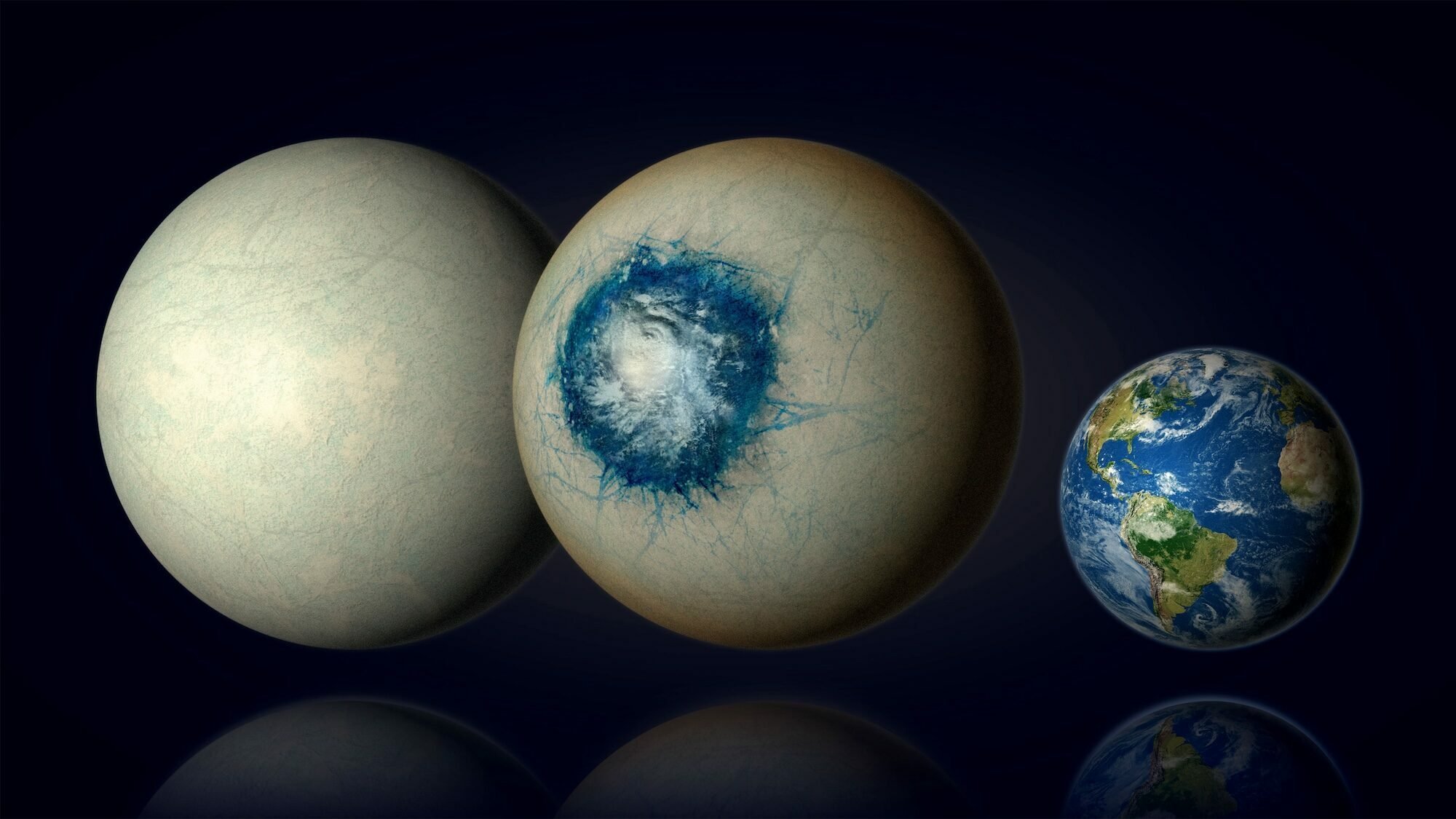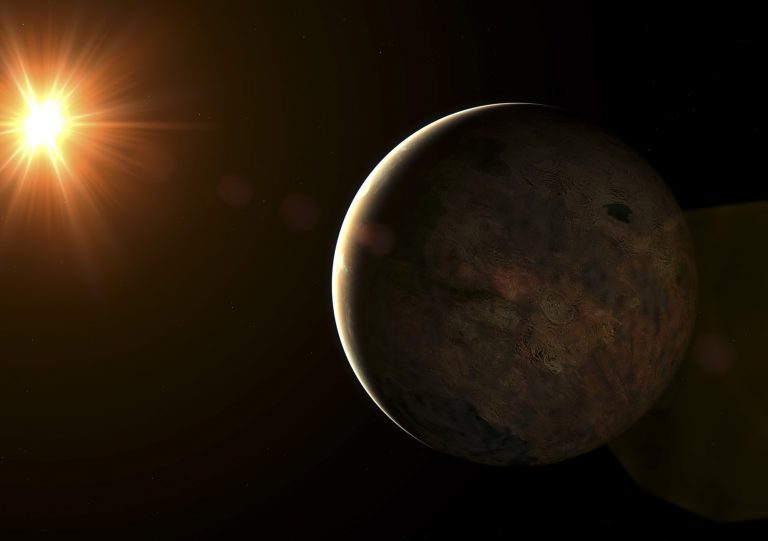
Astronomers have homed in on a world they believe might have just the right conditions for a thick atmosphere and an ocean half the size of the Atlantic.
The exoplanet — a world orbiting a star other than the sun — is LHS 1140 b, and it’s about 48 light-years away from Earth, in the constellation Cetus. The planet is a little less than double the size of Earth.
A team of scientists pointed the James Webb Space Telescope at LHS 1140 b twice in December 2023. Using a special instrument called a spectrograph on the powerful telescope, which is a collaboration between NASA and its European and Canadian space counterparts, they looked for signs of an atmosphere.
“LHS 1140 b is one of the best small exoplanets in the habitable zone, capable of supporting a thick atmosphere,” said Ryan MacDonald, coauthor of the exoplanet study based at the University of Michigan, in a statement, “and we might just have found evidence of air on this world.”

Credit: B. Gougeon / Université de Montréal illustration
Exoplanet hunters have coined names for different types of planets. Many of the known worlds travel in tight circles around their host stars. Smaller planets are mostly divided into two groups, known as super-Earths and mini Neptunes. Although both kinds are larger than Earth and smaller than Neptune, super-Earths can be as much as 1.75 times the size of our home planet, while mini Neptunes are double to quadruple the size of Earth.
The team’s goal was to determine whether LHS 1140 b was a hydrogen-rich mini Neptune or a scaled-up version of Earth, covered in water and ice. Their study immediately ruled out mini Neptune, because LHS 1140 b lacked the features of a big, puffy atmosphere. That means the exoplanet could be rocky and have other similarities to our planet.
“But can we say anything about the atmospheric composition of this super-Earth?” MacDonald said on X, formerly Twitter. “That’s where things get really exciting.”
The researchers’ analysis found possible evidence that the planet has a thick, nitrogen-rich atmosphere like Earth’s, which is 78 percent nitrogen. The study’s result, accepted for publication in The Astrophysical Journal Letters, comes from a technique called transmission spectroscopy.
This method studies the starlight filtered through the planet’s atmosphere. Molecules within the atmosphere absorb certain light wavelengths, or colors. By splitting the light like a prism into its basic parts — a rainbow — astronomers can detect which light segments are missing to figure out an atmosphere’s makeup.
LHS 1140 b orbits a red dwarf star — a much smaller, colder star than the sun — at a distance that would probably cause the planet’s surface to be frozen. But if LHS 1140 b had an atmosphere, the world could experience a greenhouse effect, making a liquid ocean possible. The team also found that the exoplanet is less massive than expected, perhaps indicating that 10 to 20 percent of it is water weight.
“We might just have found evidence of air on this world.”
Most astronomers agree that knowing what’s in another planet’s atmosphere is crucial in the quest for habitable worlds. NASA has playfully called Earth’s own atmosphere its “security blanket”: Without it, the type of life flourishing here wouldn’t exist. This cocoon holds oxygen in the air and filters out harmful ultraviolet radiation from the sun, all while keeping our world warm. Furthermore, it creates pressure that allows liquid water to exist on the surface.
Scientists have found signs of atmospheres surrounding many exoplanets over the past 20 years, but all of them have been gas giant planets, like Jupiter, with an envelope mostly composed of hydrogen. The hunt for an Earth-like world swaddled in a protective atmosphere has so far eluded astronomers, but Webb has recently helped scientists find candidates, such as 55 Cancri e or GJ 486b, another exoplanet study for which MacDonald was a co-author.
The LHS 1140 b team’s analysis suggests this exoplanet is an icy world with a bulls-eye ocean about 2,500 miles wide on the side always facing its star. The surface temperature at the center of the ocean might even be close to a refreshing 68 degrees Fahrenheit.
“We’ll likely need years of additional observations to secure a concrete detection of an atmosphere on LHS 1140b,” MacDonald said on X, “but it’s promising that the initial reconnaissance is paying off!”




















0 Comments